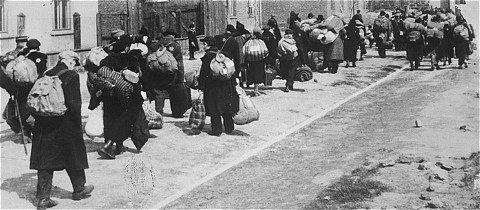
Deportations to Killing Centers
In 1941, the Nazi leadership decided to implement the "Final Solution," the systematic mass murder of European Jewry. Unlike concentration camps, which served primarily as detention and labor centers, killing centers (commonly referred to as "extermination camps" or "death camps") were places which focused almost exclusively on the mass murder of Jews as part of the “Final Solution.”
Key Facts
-
1
Deportations on this scale required the coordination of numerous German government and Nazi agencies and the involvement of SS, police, and local auxiliaries and collaborators.
-
2
The Germans attempted to disguise their deadly intentions by portraying the deportations as a "resettlement" of the Jewish population to labor camps in the "East."
-
3
Freight cars were not always the means of conveyance for deportations. Jews from Nazi Germany and its annexed territories went by passenger train.
In 1941, the Nazi leadership decided to implement the "Final Solution," the systematic mass murder of European Jewry. The Nazi regime sought to forcibly reorder the ethnic composition of eastern Europe within the framework of Nazi racial policy. One method the regime used to do so was rail transport. The German authorities used rail systems across the continent to transport, or deport, Jews from their homes, primarily to German-occupied eastern Europe. Once they had begun to methodically kill Jews in specially constructed killing centers, German officials deported Jews to these facilities by train. When trains were not available or the distances were short, deportees were sent to killing centers by truck or on foot.
Officials Coordinate Mass Transport by Train
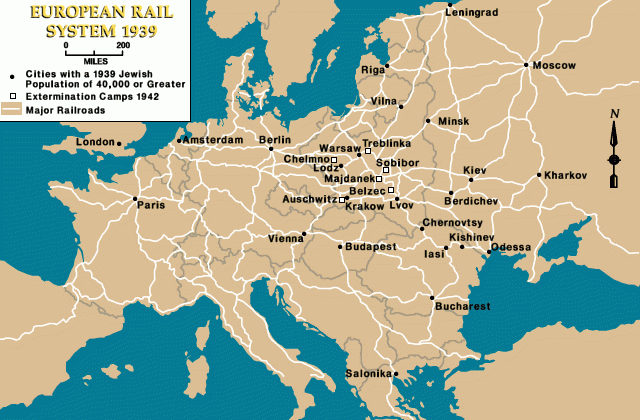
On January 20, 1942, SS, Nazi Party, and German state officials gathered at the Wannsee Conference, held in a southwestern suburb of Berlin. There, they coordinated the deportation of European Jews to killing centers (also known as “extermination camps”) in German-occupied Poland. At the time, killing centers were already in operation or under construction. The participants of the conference estimated that the "Final Solution" would involve the deportation and murder of 11 million Jews. Their estimate included Jewish residents of nations outside German control, such as Ireland, Sweden, Turkey, and Great Britain.
Deportations on this scale required the coordination of numerous German government agencies. Among them were the Reich Security Main Office (Reichssicherheitshauptamt—RSHA), the Main Office of the Order Police, the Ministry of Transportation, and the Foreign Office. The RSHA or regional SS and police leaders coordinated and often directed the deportations. The Order Police rounded up and transported the Jews to the killing centers. Local auxiliaries or collaborators in occupied territories aided in these efforts. The Ministry of Transportation coordinated train schedules, working with Department IV B 4 of the RSHA, commanded by SS Lieutenant Colonel Adolf Eichmann. The Foreign Office negotiated with Germany's Axis partners over the transfer of their Jewish citizens to German custody.
The Germans attempted to disguise their intentions. They sought to portray the deportations as a "resettlement" of the Jewish population in labor camps in the "East." In reality, the "resettlement in the East" became a euphemism for transport to the killing centers and mass murder.
Inside the Railcars
German railroad officials used both freight and passenger cars for the deportations. In order to convince the German population that the deportees were bound for resettlement, most Jews from the German Reich itself were dispatched to the east by passenger train. Jews in the German-occupied east fared far worse. German authorities generally did not give the deportees food or water, even when the journey was long or the hapless victims had to wait for days on railroad spurs for other trains to pass. Deportees were packed in sealed freight cars and suffered from overcrowding. They endured intense heat during the summer and freezing temperatures during the winter. Aside from a bucket, there was no sanitary facility. The stench of urine and excrement added to the deportees’ humiliation and suffering. Lacking food and water and proper ventilation, many deportees died before the trains reached their destinations. Armed police or military guards accompanied the transports; they had orders to shoot anyone who tried to escape.

The Victims
Between December 1941 and July 1942, the SS and police officials established five killing centers in German-occupied Poland. These were Chelmno, Belzec, Sobibor, Treblinka II (Treblinka I was a forced-labor camp for Jews), and Auschwitz-Birkenau, also known as Auschwitz II. SS and police authorities in the Lublin District of the General Government (that part of German-occupied Poland not directly annexed to Germany) managed and coordinated the deportations to Belzec, Sobibor, and Treblinka within the framework of “Operation Reinhard.” The Germans killed nearly 2.7 million Jews in the five killing centers.
Belzec
The principal victims at Belzec were Jews from southern and southeastern Poland. Also among the victims were Jews deported from the so-called Greater German Reich to the Lublin District between October 1941 and the end of summer 1942. The Greater German Reich included Germany, Austria, the Sudetenland, and the Protectorate of Bohemia and Moravia.
Sobibor
Most Jews deported to Sobibor came from the Lublin District. German authorities also transported French and Dutch Jews to Sobibor in spring and summer 1943. In late summer 1943, they deported small groups of Soviet Jews from Belarusian [Belorussian] and Lithuanian ghettos.
Treblinka II
German officials transported the Jews from the Warsaw and Radom districts of the General Government to Treblinka II, where SS and police officials murdered them. Jews from the Bialystok administrative district were also deported there.
Chelmo
German authorities deported most of the Jewish residents of the Lodz ghetto to Chelmno between January 1942 and spring 1943, and then in early summer 1944. The ghetto's surviving Roma and Sinti (so-called "Gypsy") residents were also deported there during that time.
Auschwitz-Birkenau
In 1943 and 1944, the Auschwitz-Birkenau killing center played a significant role in the German plan to kill the European Jews. Beginning in late winter 1943, trains arrived at Auschwitz-Birkenau on a regular basis. These trains carried Jews from virtually every German-occupied country of Europe—from as far north as Norway to the Greek island of Rhodes off the coast of Turkey in the south, from the French slopes of the Pyrenees in the west to the easternmost reaches of German-occupied Poland and the Baltic states.
Western and Northern Europe
German officials and local collaborators deported Jews from western Europe via transit camps. Among these transit camps were Drancy in France, Westerbork in the Netherlands, and Mechelen (Malines) in Belgium. Approximately 75,000 Jews were deported from France. More than 65,000 of them were transported from Drancy to Auschwitz-Birkenau; approximately 2,000 were sent to Sobibor. The Germans deported more than 100,000 Jews from the Netherlands. Almost all of these individuals were deported from Westerbork: about 60,000 to Auschwitz and more than 34,000 to Sobibor. Between August 1942 and July 1944, 28 trains transported more than 25,000 Jews from Belgium to Auschwitz-Birkenau via Mechelen.
In the autumn of 1942, the Germans seized approximately 770 Norwegian Jews and deported them by boat and train to Auschwitz. In September 1943, there was an effort to deport the Danish Jews. However, it failed. Alerted to the impending roundup, the resistance in Denmark assisted the mass escape of Danish Jews to neutral Sweden. Of the approximately 7,500 Jews living in Denmark, only 470 were deported to Theresienstadt.
Southern Europe
The Germans deported Jews from Greece, from Italy, and from Croatia. Between March and August 1943, SS and police officials deported more than 40,000 Jews from Salonika, in northern Greece, to Auschwitz-Birkenau. Camp staff killed most of them in the gas chambers upon arrival. After the Germans occupied northern Italy in September 1943, they deported about 8,000 Jews. Most were deported to Auschwitz-Birkenau. Based on an agreement with their Croatian Axis partner, German officials took custody of around 7,000 Croat Jews and deported them to Auschwitz-Birkenau.
Bulgarian gendarmes and military units rounded up and deported around 7,000 Jewish residents of Bulgarian-occupied Macedonia, formerly a part of Yugoslavia, via a transit camp at Skopje. Bulgarian authorities concentrated approximately 4,000 Jews residing in Bulgarian-occupied Thrace at two assembly points in Bulgaria. From there, they transferred the Jews to German custody. In all, Bulgaria deported more than 11,000 Jews to German-controlled territory. The German authorities deported these Jews to Treblinka II and killed them in the gas chambers.
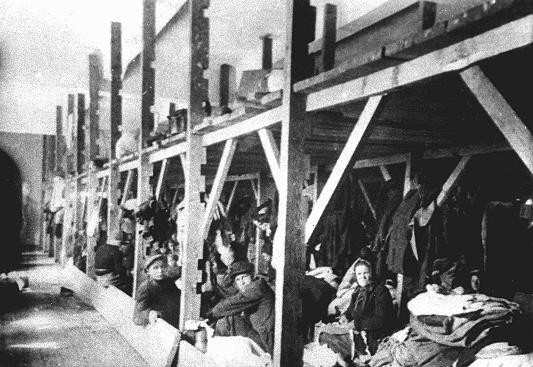
Central Europe
German authorities began to deport Jews from the Greater German Reich in October 1941. At that time, the construction of the killing centers was still in the planning stage. Between October 15, 1941, and November 4, 1941, German authorities deported 20,000 Jews to the Lodz ghetto. Between November 8, 1941, and October 1942, German authorities deported approximately 49,000 Jews from the Greater German Reich to Riga, Minsk, Kovno, and Raasiku, all in the Reich Commissariat Ostland. The Reich Commissariat Ostland included German-occupied Belarus [Belorussia], Lithuania, Latvia, and Estonia. SS and police officials shot the overwhelming majority of the deportees upon arrival there.
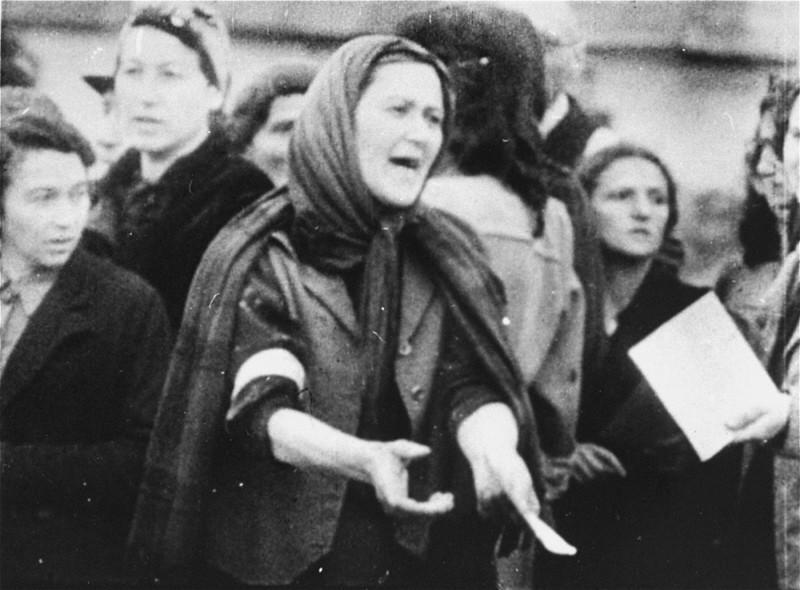
Between March and October 1942, German authorities deported another approximately 63,000 German, Austrian, and Czech Jews to the Warsaw ghetto and to various locations in Lublin District. These locations included the transit camp-ghettos at Krasnystaw and Izbica and the killing center in Sobibor. German Jewish residents of the Lodz and Warsaw ghettos were later deported with Polish Jews to Chelmno, Treblinka II, and, in 1944, to Auschwitz-Birkenau.
The first transport of Jews from the Greater German Reich directly to Auschwitz arrived on July 18, 1942, from Vienna. From late October 1942 until January 1945, German authorities deported more than 71,000 Jews remaining in the Greater German Reich to Auschwitz-Birkenau. They deported elderly or prominent Jews from Germany, Austria, the Protectorate of Bohemia and Moravia, and western Europe to the Theresienstadt ghetto. This ghetto also served as a transit camp for deportations further east, most often to Auschwitz-Birkenau.
Between May and July 1944, Hungarian gendarmes, in cooperation with German security police officials, deported nearly 440,000 Jews from Hungary. Most of them were sent to Auschwitz-Birkenau. With the cooperation of Slovak authorities, the Germans deported more than 50,000 Slovak Jews to the concentration camps of Auschwitz-Birkenau and Majdanek. The Slovak Jews were the first to be selected for the gas chambers at Birkenau. In the autumn of 1944, German SS and police officials deported 10,000 Slovak Jews to Auschwitz-Birkenau during the Slovak uprising. This deportation was the last major one to a killing center.
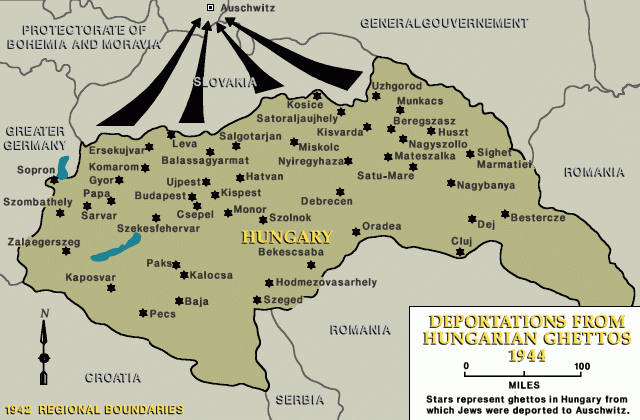
Between March 1942 and November 1943, the SS and police deported approximately 1,526,000 Jews, most of them by train, to Belzec, Sobibor, and Treblinka, the killing centers of Operation Reinhard. Between December 1941 and March 1943, and again in June-July 1944, SS and police officials deported at least 167,000 Jews and approximately 4,300 Roma to the killing center at Chelmno. Victims were transported there by train, by truck, and on foot. Between March 1942 and December 1944, the German authorities deported approximately 1.1 million Jews and 23,000 Roma and Sinti to Auschwitz-Birkenau. The overwhelming majority were deported by rail.
Fewer than 500 survived the Operation Reinhard killing centers. Only a handful of Jews survived the transports to Chelmno. Perhaps as many as 100,000 Jews survived deportation to Auschwitz-Birkenau, having been selected for forced labor upon arrival.
Critical Thinking Questions
Investigate the role of the railroads in and out of Germany in the deportation of the Jews of Europe to their deaths. Were these state railways or privately run, for example?
What percentage of rail traffic during World War II was used for deportations?
What level of organization and administration is required to move, murder, and dispose of millions of people? What other tasks are required before the victims are murdered? Who filled these roles?
How did deception of the victims play a role?

